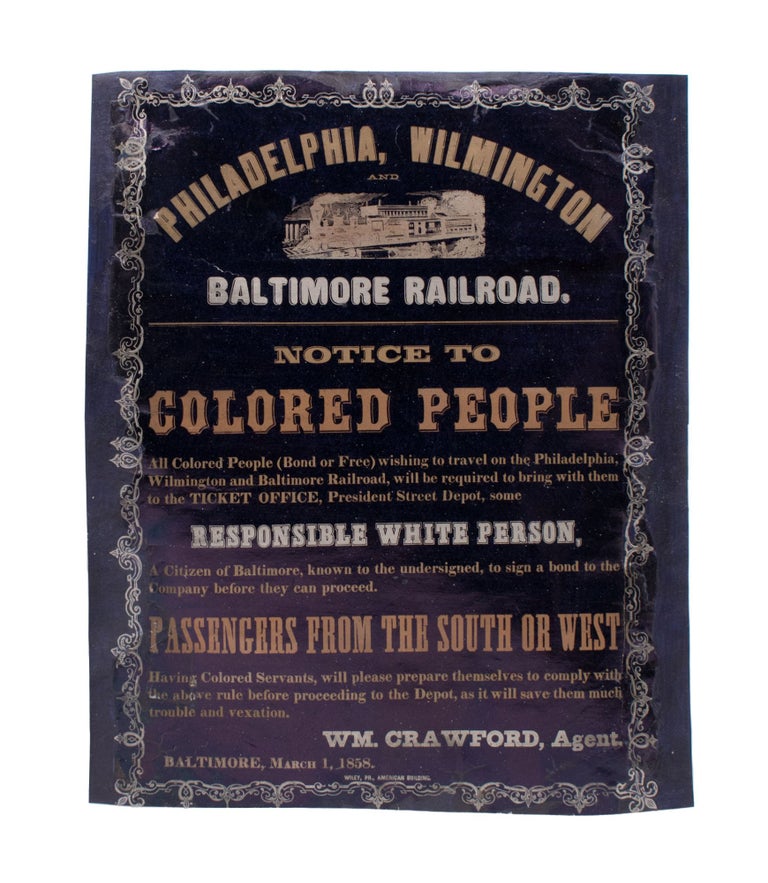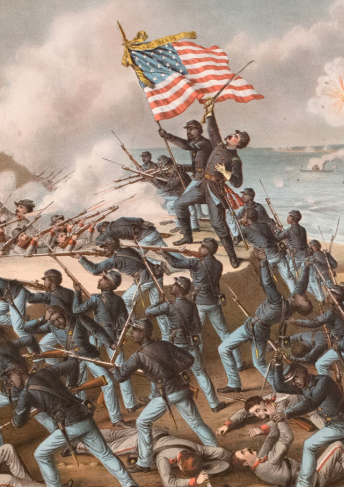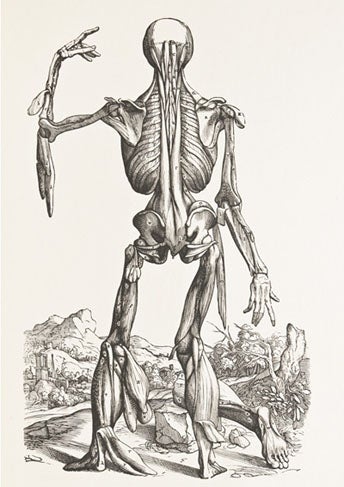
Philadelphia, Wilmington and Baltimore Railroad. Notice to Colored People. All Colored People (Bond or Free) wishing to travel on the Philadelphia, Wilmington and Baltimore Railroad, will be required to bring with them to the Ticket Office, President Street Depot, some Responsible White Person, A Citizen of Baltimore, known to the undersigned, to sign a bond to the Company before they can proceed.
Baltimore: Wiley, Pr., American Building, March 1, 1858.
Price: $35,000.00
About the item
Broadside, printed in gold and silver on coated glossy black paper, within an ornamental border. Signed in print by William Crawford, Agent. 12 x 10 inches. Extensive restoration at the margins including some of the border and a few letters at the lower left in expert facsimile. Framed.
Item #346518
In their Annual Report for 1857, the directors of the Philadelphia, Wilmington and Baltimore Railroad (PWBR) noted that lines have been or would shortly be connected for a direct train service from Georgia, South Carolina and Tennessee to Philadelphia: "This safe and quick inland route will command a very large portion of the Southern business as soon as it becomes generally known." Given the passage of the Fugitive Slave Act in 1850, the concern of liability against the railroad resulting from fugitive slaves from the south riding to freedom in Philadelphia no doubt prompted increased regulations directed toward African American passengers.
Indeed, the PWBR had been among the railroads which had transported Henry "Box" Brown to the abolitionist Passmore Williamson in 1849 (albeit as cargo and not as a passenger). Furthermore, in July 1855, enslaved Jane Johnson and her children had arrived in Philadelphia via the railroad with their master, North Carolina politician John H. Wheeler, leading Williamson and fellow Pennsylvania Anti-Slavery Society abolitionist William Still to assist in their self-emancipation. Williamson's subsequent arrest and imprisonment for aiding the slaves would become a cause celebre among the abolitionist community.
Though often reproduced as the pre-eminent example of a mid-19th century broadside enforcing racial discrimination (largely reproduced from a digital image of a photostat at the Schomburg Center for Research in Black Culture), this broadside is quite rare. There are no examples of the actual broadside located in OCLC. Although such signs from the Civil Rights era are frequently on the market, we have never before encountered another from the antebellum period.


